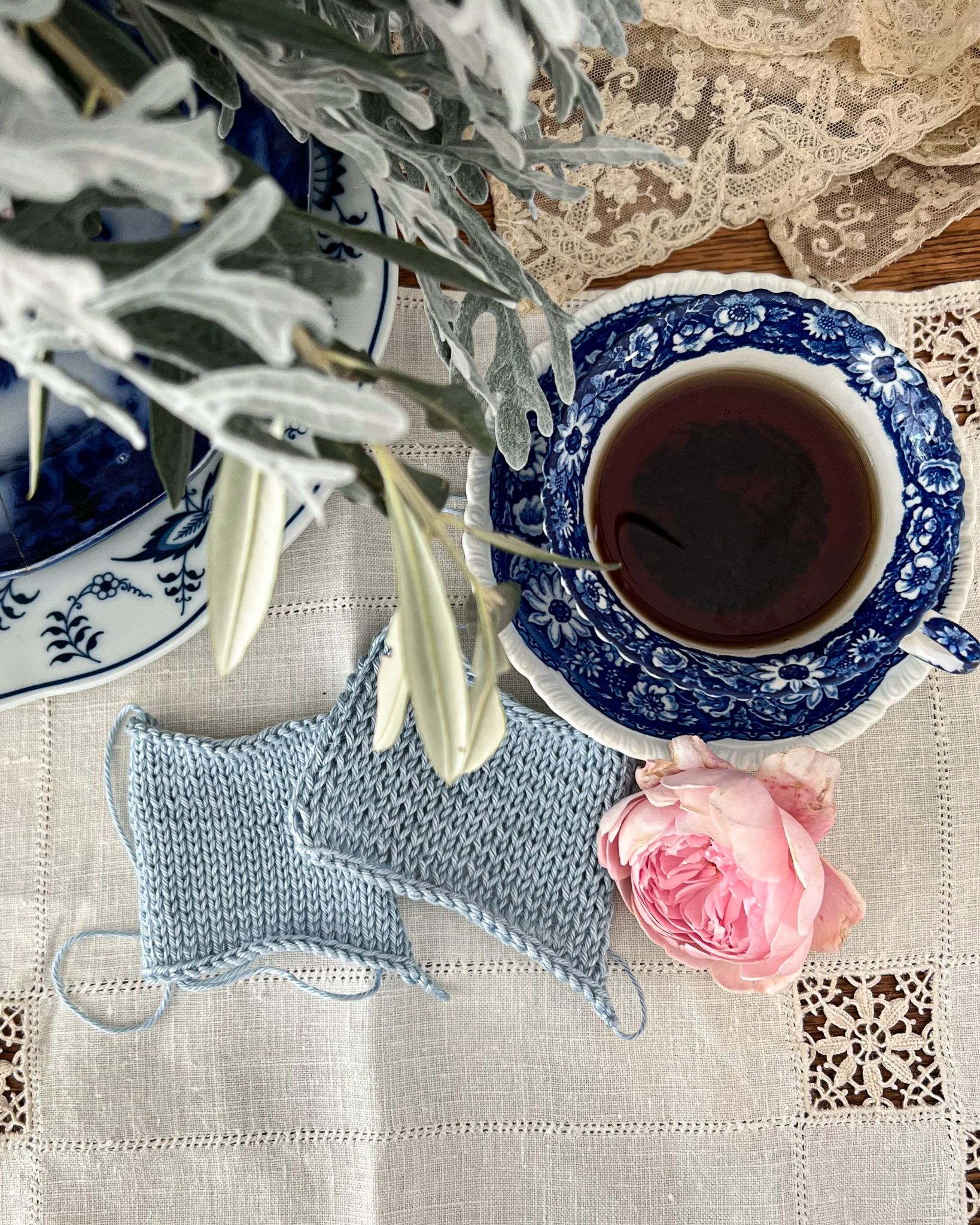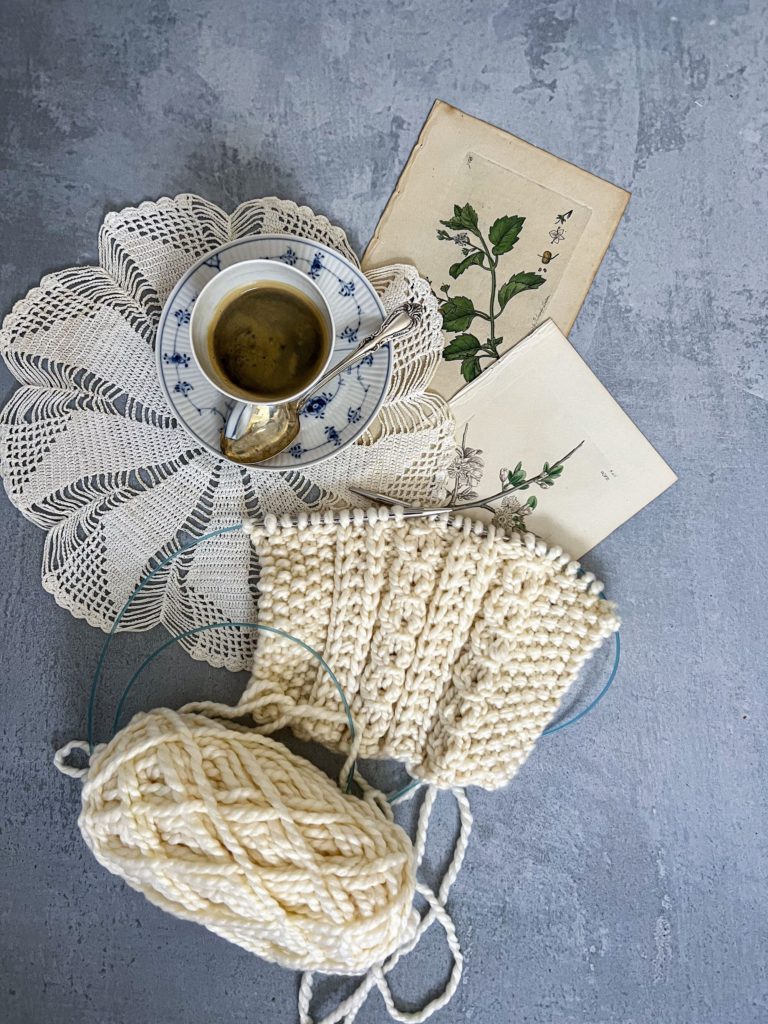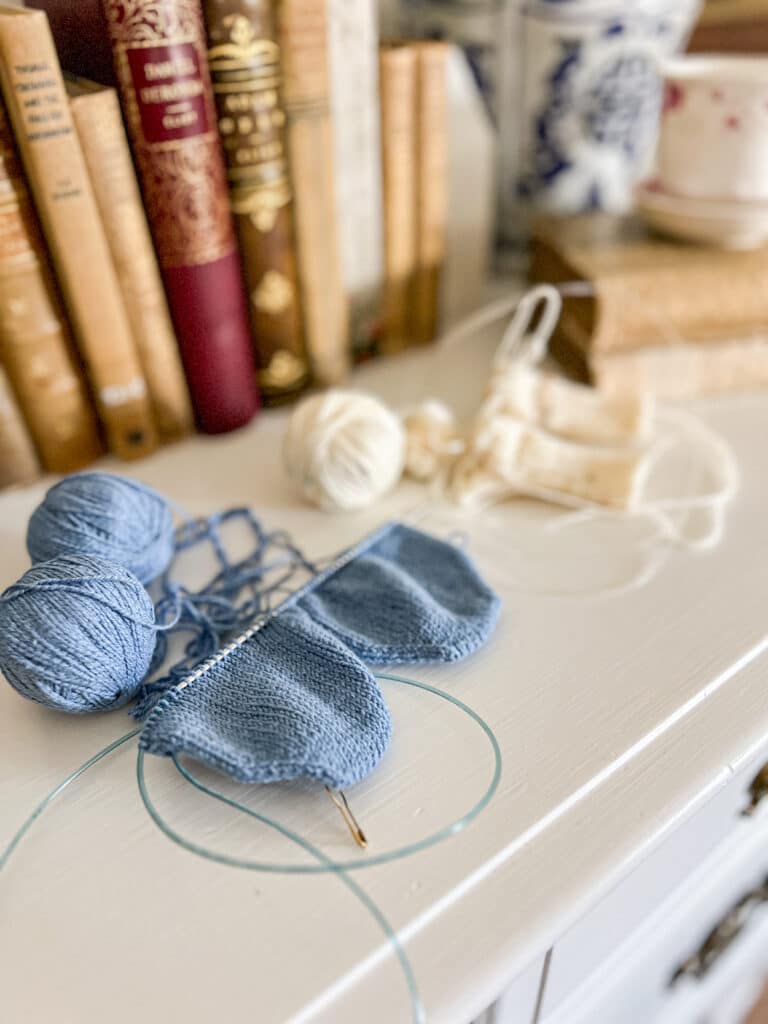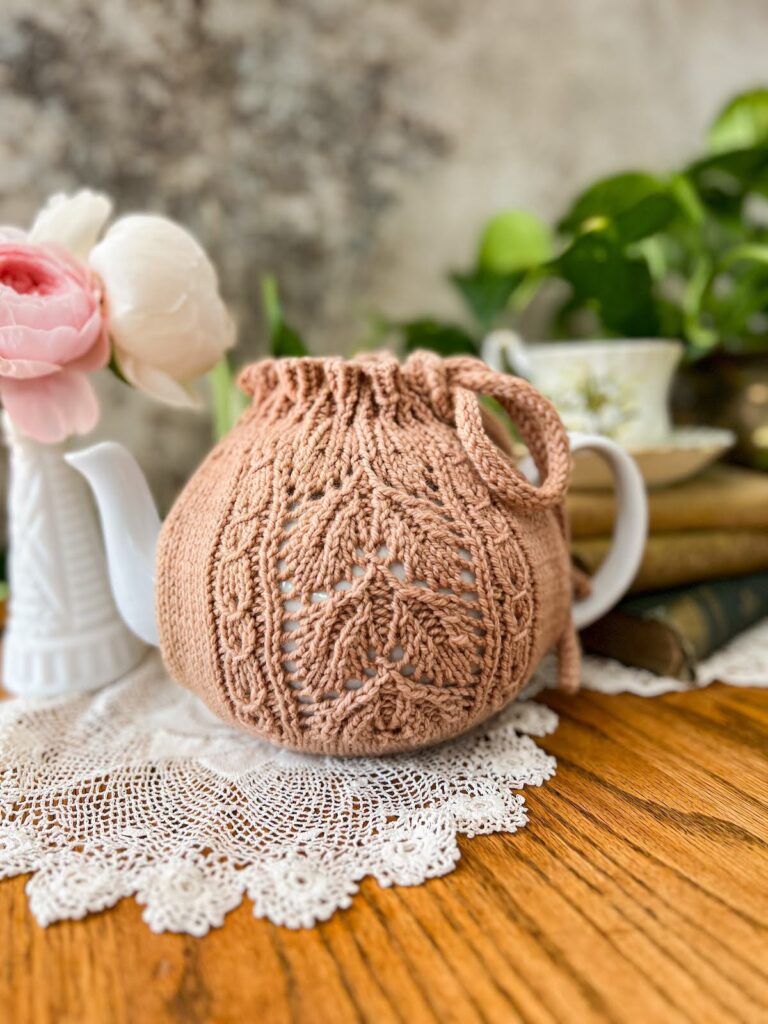I’ve been knitting up some new samples of my Pebbles by the Sea Hat lately. That hat is designed for chunky yarn, which isn’t a yarn weight I use very often.
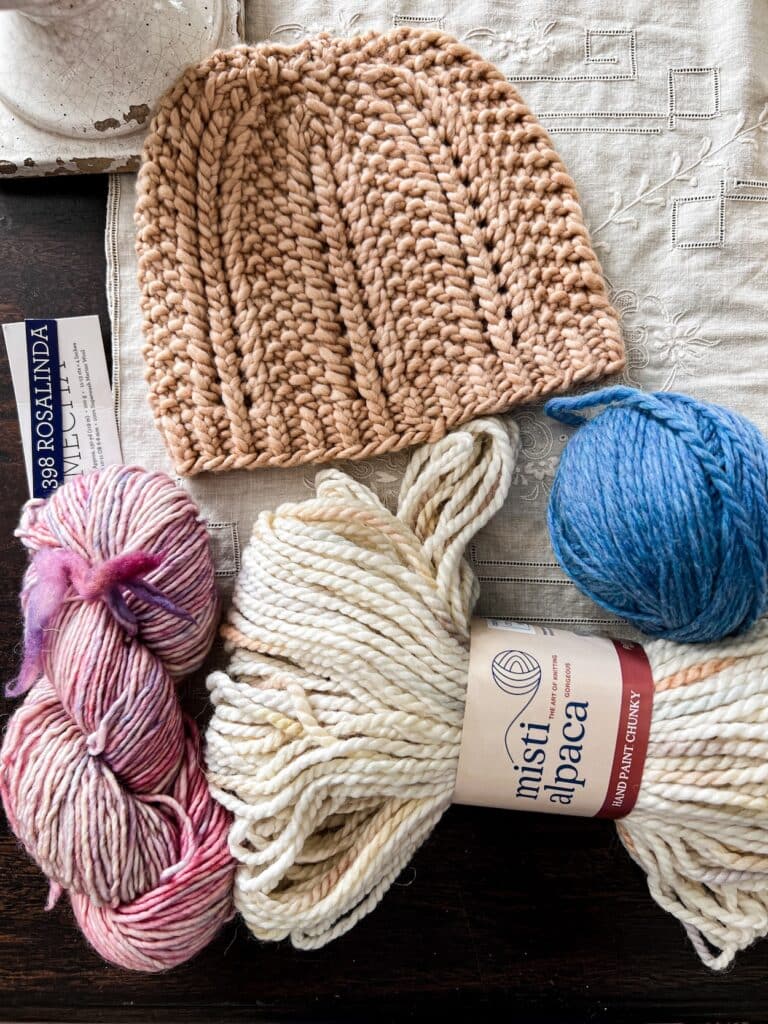
And as I’ve been working, I’ve noticed that there are a few things about thicker yarn (other than the obvious, of course) that are different from the fingering-weight and DK-weight yarns I usually use. Those differences can easily catch knitters by surprise, so I thought it would be helpful to throw together this quick list of tips
1. Pay close attention to gauge.
Gauge is always important, of course, but the thicker your yarn gets, the more it matters. By the time you’re working in bulky and super-bulky yarn, just one stitch per inch difference can really matter.
You need to be spot-on with your gauge, which means you also need to be spot-on with measuring your gauge correctly. Knit a large gauge swatch and measure it several times in several different spots to make sure your measurements are accurate.
2. Yarn construction is crucial.
Thicker yarn means larger stitches that are more visible to the naked eye. If you choose a yarn that doesn’t wear well and use it in a project that gets a lot of friction, each shabby-looking stitch is going to be very, very obvious.
The roving-type yarns in bulky and super-bulky weights are popular because they’re so soft and fluffy, but they can quickly look flat, drab, and sad after some use. Opt for a yarn with at least a couple plies in it. This will enhance durability and keep your stitches looking crisp.

3. Rest your hands and wrists often.
Thicker yarns mean thicker needles and bigger stitches. This is fairly obvious. What’s less obvious is that you’ll also need to make larger movements with your hands to form each stitch when you’re knitting.
If you’re like me and primarily knit using fingering-weight yarn, you’re probably used to relatively minimal movement while knitting, especially if you’re also a continental knitter. These larger movements with thicker yarn can cause hand and wrist pain if you’re not used to them.
So take breaks regularly, stop when you feel pain, and be sure to do some stretches to help keep your hands and wrists in good working order.
4. Practice smooth yarn joins.
When you’re knitting garments, you’ll need to use a few different balls/hanks/skeins of yarn to finish your project. The thing is, when you’re using thicker yarn, those larger stitches mean any inconsistencies in your stitching will be more visible. That means the spot where you join the new yarn to the old yarn is more obvious.
To help minimize the visibility of your yarn join, try out some different joining methods and see which version helps you get the smoothest join. This is one area where swatching can be super helpful! After you finish your swatch, you can test different methods for weaving in ends, too.
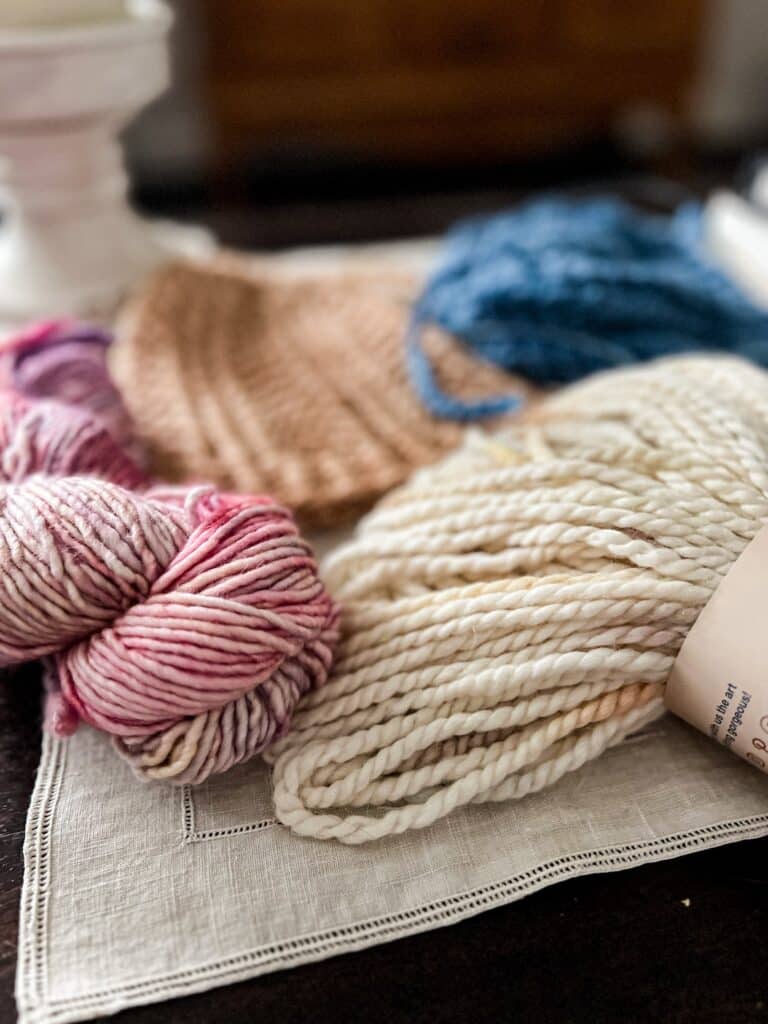
5. Choose the right project.
Bulky yarns can be really thick and, well, bulky, which means they may not be comfortable for close-fitting garments where you need freedom of movement. The thickness of the yarn can make it hard to bend elbows and move shoulders comfortably. If your gauge is on the tighter side, it can make the fabric even more stiff and difficult to move in.
On the other hand, bulky yarns can make really fabulous accessories. They knit up quickly and their thickness is great for keeping hands and heads warm on extra cold days.
6. Store your thick yarn carefully.
Many thicker yarns are loosely spun and plied, which gives them their lofty characteristic. This also helps reduce some of the weight and bulk of a thicker yarn.
Unfortunately, that construction means they’re also prone to getting squished and flattened if stored under a lot of weight or in a vacuum-sealed bag. While they’ll usually fluff back up to some extent, it’s always best to avoid potential trouble by storing your bulky yarns loosely and without a lot of weight on top of them.
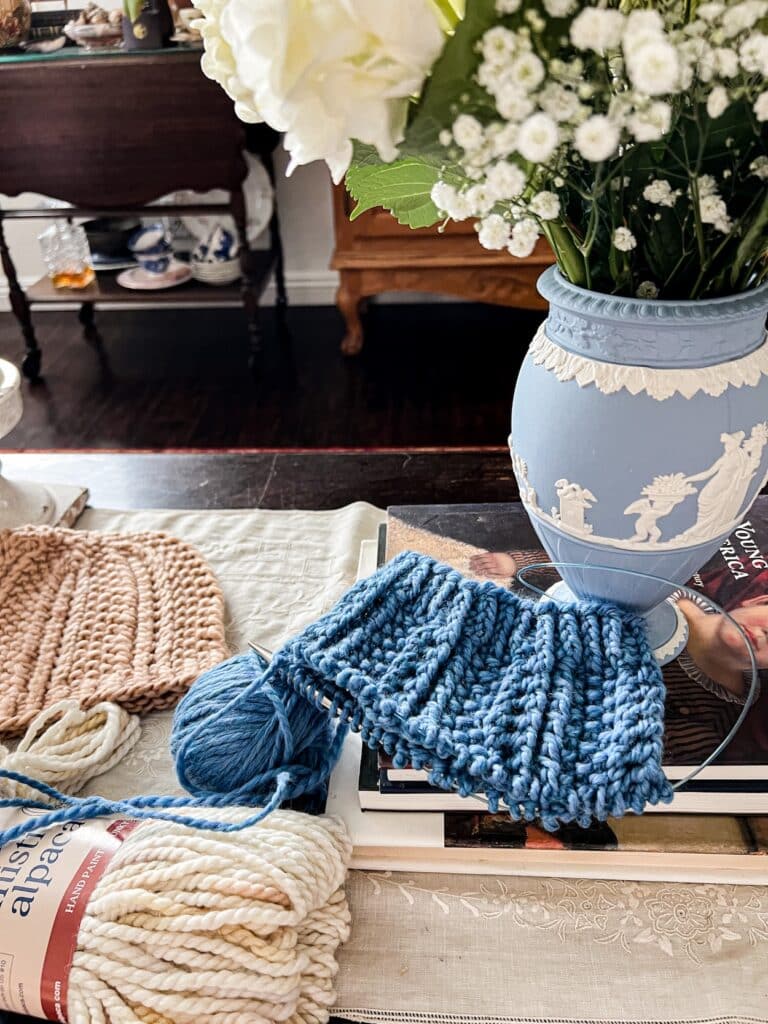
Let’s stay connected!
Join my newsletter for 30% off all new releases, regular updates with helpful tips and tricks, first crack at registration for upcoming workshops, exclusive discounts, and more.
Prefer to read without ads? Join my Patreon, which starts at just $1 a month!
Join the A Bee In The Bonnet Facebook Group to participate in knitalongs and other fun community events
Come hang out with me on the A Bee In The Bonnet TikTok
Follow along on the A Bee In The Bonnet Instagram
Get inspired via the A Bee In The Bonnet Pinterest

